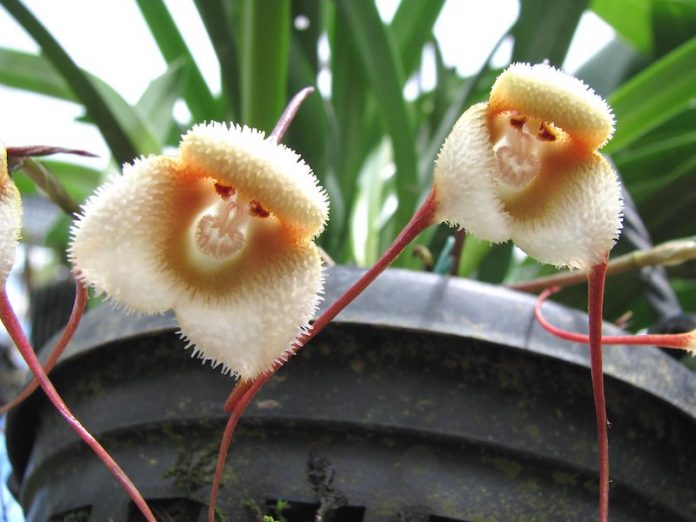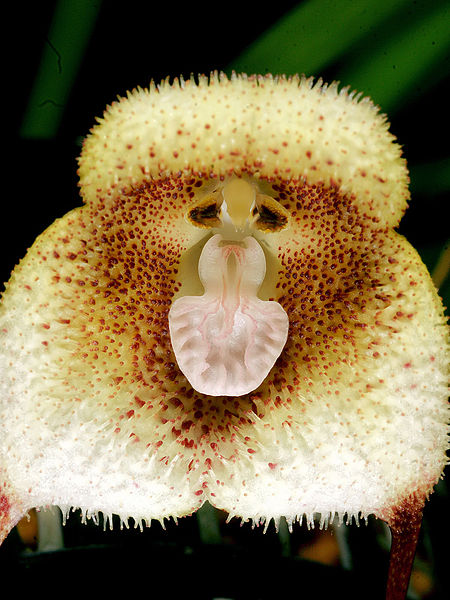(Castellano) Las extrañas orquídeas de Perú que parecen monos
ORIGINAL LANGUAGES, 14 Oct 2019
Andrea López | Tecnológico de Monterrey – TRANSCEND Media Service
17 Sep 2019 – Esta curiosa especie habita las montañas y fue descubierta hace menos de quince años.
¿Qué ves en la imagen de arriba? Parecen pequeñas caras de mono, pero en realidad son orquídeas.
También conocidas como ‘orquídeas mono’, el nombre científico de esta planta peruana es igual de curioso: Dracula saulii.
Dracula es un género de orquídeas al que pertenecen 118 especies nativas de Latinoamérica. Su extraño nombre “Dracula” deriva del latín “pequeño dragón”, haciendo referencia al aspecto que presentan, con dos largas espuelas que salen de los sépalos.
Las Dracula saulii se caracterizan además por sus colores blanco, rosado y marrón, así como por su forma que, en conjunto, dan por resultado su similitud con los monos. Éstas fueron descubiertas recientemente, en 2006, por el peruano Saúl Ruiz, de acuerdo con los expertos, de ahí el “saulii”.
Las ‘orquídeas mono’ crecen en climas fríos, especialmente en los bosques de las montañas de Perú, húmedos y brumosos, alcanzando poco más de medio metro de alto.
¿Puede la clonación de plantas ser la solución a la extinción de especies? Entérate aquí.
Go to Original – tecreview.tec.mx
Tags: Environment, Fauna, Latin America Caribbean
DISCLAIMER: The statements, views and opinions expressed in pieces republished here are solely those of the authors and do not necessarily represent those of TMS. In accordance with title 17 U.S.C. section 107, this material is distributed without profit to those who have expressed a prior interest in receiving the included information for research and educational purposes. TMS has no affiliation whatsoever with the originator of this article nor is TMS endorsed or sponsored by the originator. “GO TO ORIGINAL” links are provided as a convenience to our readers and allow for verification of authenticity. However, as originating pages are often updated by their originating host sites, the versions posted may not match the versions our readers view when clicking the “GO TO ORIGINAL” links. This site contains copyrighted material the use of which has not always been specifically authorized by the copyright owner. We are making such material available in our efforts to advance understanding of environmental, political, human rights, economic, democracy, scientific, and social justice issues, etc. We believe this constitutes a ‘fair use’ of any such copyrighted material as provided for in section 107 of the US Copyright Law. In accordance with Title 17 U.S.C. Section 107, the material on this site is distributed without profit to those who have expressed a prior interest in receiving the included information for research and educational purposes. For more information go to: http://www.law.cornell.edu/uscode/17/107.shtml. If you wish to use copyrighted material from this site for purposes of your own that go beyond ‘fair use’, you must obtain permission from the copyright owner.
Read more
Click here to go to the current weekly digest or pick another article:
ORIGINAL LANGUAGES:

